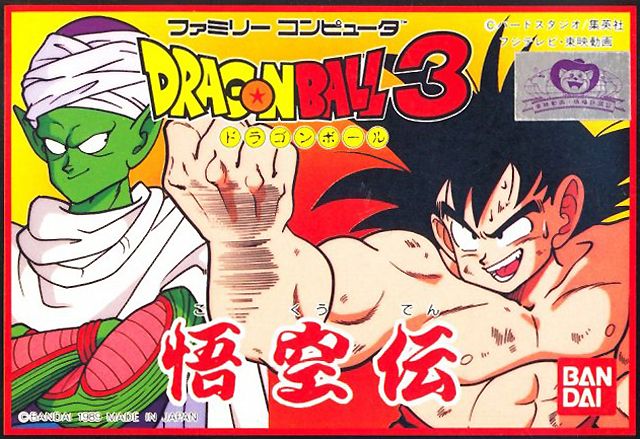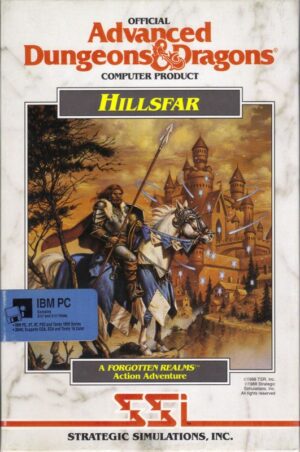Retro Replay Review
Gameplay
Dragon Ball 3: Gokūden adopts a unique card-based system that governs every action, from exploring the overworld to engaging in combat. Each turn you draw a selection of cards bearing movement values, attack bonuses, or special abilities. Moving Son Goku, Krillin, or Yamcha across the map feels akin to a strategic board game, where planning your route and conserving high-value cards for critical encounters becomes essential.
(HEY YOU!! We hope you enjoy! We try not to run ads. So basically, this is a very expensive hobby running this site. Please consider joining us for updates, forums, and more. Network w/ us to make some cash or friends while retro gaming, and you can win some free retro games for posting. Okay, carry on 👍)
Training plays a central role in progression. Between story events you allocate time to hone each character’s stats—strength, speed, endurance—through mini-games or simple stat-boosting events. These sessions influence the effectiveness of your combat cards, turning routine leveling into a thoughtful exercise: do you bolster Goku’s raw power for devastating ki attacks, or balance all three fighters to handle varied enemy types?
Battle sequences combine card draws with a turn-based grid. Positioning matters as much as the cards you hold; a well-timed Defense +2 card can turn the tide when facing a barrage of enemy strikes. While the draw mechanic introduces an element of chance, skilled players can build decks that mitigate bad luck and exploit enemy weaknesses. Occasional boss fights demand careful card conservation and strategic positioning, creating satisfying peaks of challenge throughout the roughly 20–30-hour campaign.
Graphics
On its original hardware, Gokūden delivers vibrant pixel art that faithfully recreates Toriyama’s signature character designs. Son Goku, Bulma, Krillin, Yamcha, and the rogues’ gallery of foes appear in crisp, colorful sprites that pop against varied backdrops—from lush forests and rolling hills to ominous military outposts.
Battle animations are simple yet charming. When a character unleashes a powerful Kamehameha or Dragon Fist, the game overlays rudimentary but effective visual flourishes—flashing energy waves, screen shakes, and dramatic close-up portraits. Though dated by modern standards, these touches evoke the spirit of the anime and provide satisfying feedback when your strategy pays off.
The overworld map, rendered in bright, cheery tones, encourages exploration. Towns are dotted with NPCs offering side activities or training opportunities, while fields and caves hide rare items. Despite hardware limitations, the game’s environments never feel monotonous, thanks to varied tile sets and occasional dynamic weather effects like drifting clouds or rain.
Story
Gokūden traces Son Goku’s journey from an innocent mountain boy to a seasoned martial artist and family man. The narrative opens with his fateful meeting with Bulma and the quest for the seven Dragon Balls, immediately grounding players in the series’ iconic premise. From there, the game unfolds major arcs—Desert Bandit skirmishes, the Turtle Hermit’s tutelage, Red Ribbon Army incursions, and World Martial Arts Tournaments.
Key moments are presented through text dialogue, interspersed with character portraits and simple event animations. Fans will appreciate reliving Goku’s first confrontations with foes like Emperor Pilaf’s minions and the climactic battles against the Red Ribbon Army’s generals. Newcomers gain a coherent picture of early Dragon Ball lore, complete with lighthearted banter and occasional comic relief.
One of the most memorable chapters revisits Goku’s courtship and eventual marriage to Chi-Chi, offering an emotional beat that humanizes the hero beyond his fighting prowess. While the pacing sometimes slows during extended training or card-management segments, the story remains engaging thanks to faithful adaptations of beloved scenes and characters.
Overall Experience
Dragon Ball 3: Gokūden stands out as a well-crafted homage to the original manga, blending strategic card mechanics with role-playing elements. Its deliberate pacing and emphasis on planning will resonate with players who enjoy methodical progression over button-mashing action. The training systems and deck-building aspects add layers of depth, though they may feel cumbersome to those expecting a fast-paced fighting game.
Difficulty scales reasonably throughout the adventure. Early encounters serve as tutorials for both the card layout and character abilities, while later boss fights demand careful resource management and precise use of high-value cards. Replayability is bolstered by optional side quests, hidden card types, and the chance to experiment with different stat distributions across characters.
Ultimately, Gokūden is a must-play for Dragon Ball enthusiasts seeking a nostalgic trip through Goku’s early life, wrapped in a unique strategic framework. While its mechanics may not appeal to action purists, the game’s faithful story adaptation, charming visuals, and thoughtful progression systems make it a standout title for fans of classic RPG hybrids.
 Retro Replay Retro Replay gaming reviews, news, emulation, geek stuff and more!
Retro Replay Retro Replay gaming reviews, news, emulation, geek stuff and more!









Reviews
There are no reviews yet.